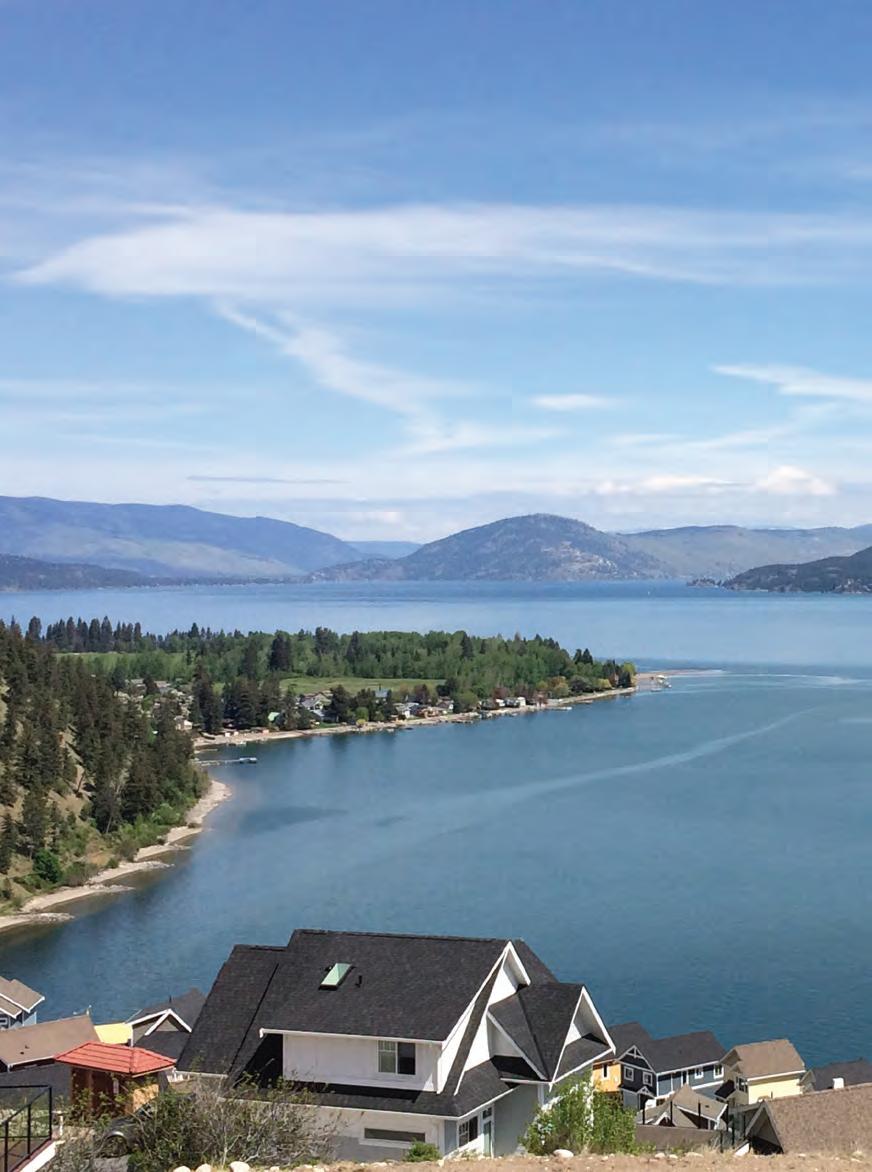
11 minute read
Environment
We will initiate and support efforts to reduce our environmental footprint, adapt to climate change and connect with nature.
In collaboration with others, we’ll develop the strategies, plans and actions to protect our watersheds, care for our lakes and maintain foreshore areas. We also work with partners and other levels of government to manage our solid wastes, address dangers from flooding and wildfires and enhance our region’s ecosystems.
Advertisement
Getting Ahead Of Climate Change
We’re faced with the reality of our changing climate and the impact that it’s having on our communities, economy and environment. Like preparing for any emergency, the more we understand and can plan for the future, the better the likelihood we will be able to respond, adapt and remain resilient.
That’s why it’s important that the Regional District is working with the regional districts of North Okanagan and Okanagan-Similkameen, along with the Pacific Climate Impacts Consortium and nearly 90 stakeholders to develop a Climate Projections Report.
This document offers science-based information on how the Okanagan’s climate is projected to change. The intent will provide community leaders and local decision makers with solid information and suggestions to explore how together we can prepare the Okanagan 30 and 60 years in the future for the inter-related climate changing impacts that will face our region.
Protecting Okanagan Lake
The natural shoreline around Okanagan Lake as we know it today is radically different than it was just a decade ago. In fact, development over the last ten years has impacted more than half the natural waterfront, so that today, only 41% of it remains in its natural state.
These changes have taken place in almost every local government jurisdiction surrounding Okanagan Lake. They include the removal of native vegetation, construction of retaining walls, docks, marinas, road access and general landscaping.
Careful management to maintain natural habitat along the waterfront will be critical to prevent loss of key habitat for fish and wildlife. Important ecosystem services, like water filtration and flood protection, may also be permanently lost over time, unless these areas are better protected. Threatened and endangered species are also very sensitive to disturbance and often have a limited capacity to respond to changes.
Without any changes, all of the remaining unprotected natural shoreline along Okanagan Lake could be lost within the next generation or two.
That’s why in 2019 the Regional Board approved participating in the first phase of a collaborative effort to develop a framework for advancing a region-wide protection strategy for Okanagan Lake.
The objectives of the Okanagan Lake Protection Strategy are to identify the most pertinent issues impacting the lake including water quality, aquatic and terrestrial ecosystem health, cultural and recreational values, and ultimately collaborating to develop a practical and enforceable strategy to enhance shoreline management and source water protection.
A Breath Of Fresh Air
Clean, fresh air is something we’ve all come to cherish in the Central Okanagan.
For more than 20 years, the Regional Air Quality program has been dedicated to improving and protecting the air we breathe and share through ongoing awareness, education and programs designed to lower emissions and forms of pollution that can be harmful to resident’s health.
One way it does that is through the free Agricultural Chipping program, which saw orchardists chip, rather than burn, more than 4500 cubic metres of wood waste, enough to fill almost two Olympic size swimming pools. As well, 15 rebates were provided through the new Mow-Chip-Rentit program, offering residents another alternative to open burning. These programs combined cleared more than 150 acres.
Another program that helps clear the air is the Woodstove Exchange, which provides rebates of $250 and $400 for recycling old wood burning appliances with new, cleaner burning technology. During 2019, a dozen uncertified, smoke-belching appliances were replaced in the Central Okanagan.
Parks For All
Connecting with nature is an important theme of the Strategic Priorities and our Visitor Services and Community Relations staff is dedicated to providing and supporting the best experience possible. They offer a wide range of interactive programs encouraging people to get outdoors, be active and celebrate our natural environment.
In fact, our programs touched over 52,000 participants during 2019 in 25 of 30 of our regional parks.
In our ongoing effort to make the park experience accessible to as many people as possible, we value our partnership with the Community Recreation Initiative Society or CRIS. It’s a non-profit organization of volunteers who love sharing the outdoor experience through specialized equipment that opens up our parks to those with physical and other challenges, so that they too can celebrate and connect with our natural world.
In ongoing work to make our parks for all, we celebrated completion of a new accessible trail in Mission Creek Regional Park.
We also plant the seeds of outdoor connection with our younger generation. Many of our programs such as the ever popular Story Time, to Roll and Stroll and Go Fish, encourage youngsters and their caregivers to share some quality time together.
The Forest Is Your Classroom
When the outdoors and nature are your classroom, the sky’s the limit.
The Regional District and the Clubhouse Child Care Centre teamed up for a unique three year pilot project centred in Woodhaven Nature Conservancy Regional Park.
The partnership sees the Centre operating the new Treehouse Forest Preschool each weekday for a maximum of 20 children.
Participants benefit from a freedom to explore in nature which builds confidence, critical thinking and leadership skills. Outside learning in a sensory-rich setting enhances their physical, cognitive and social skills allowing them to be healthier, happier and calmer.
More Efficient Wastewater Treatment
It takes a lot of energy to process close to one million litres of wastewater every day. That’s why we’re always on the lookout for ways to reduce the amount of energy we use and lower greenhouse gas emissions at the Westside Regional Wastewater Treatment Plant.
The RDCO applied for a grant to the CleanBC Communities Fund to assist in funding $985,000 in upgrades to the facility that treats wastewater from businesses and residents in the City of West Kelowna, District of Peachland and Westbank First Nation.
If successful, the $685,000 grant would be combined with more than $300,000 in funding from the Regional District for the proposed improvements that would definitely improve our environmental footprint at the facility off Gellatly Road in West Kelowna.
Fighting Mosquitoes One Tire At A Time
For more than three decades the Regional District has been working in the field and encouraging residents to help reduce potential habitat that helps breed nuisance mosquitoes.
Just a few millimetres of water is all that’s needed to create thousands of biting adults. And old, unused tires sitting around properties provide the perfect environment.
For the fifth year in a row, the RDCO teamed up with Tire Stewardship BC (TSBC) for a fall event at the Okanagan College KLO campus. Residents could drop off as many old tires as they wanted for free disposal. TSBC recycles them into other products.
This year, another record was set as more than 1,500 tires were collected during the five hour event! Find out how you can help reduce mosquito habitat around your property at rdco.com/mosquitoes.
More Parkland To Explore
Another opportunity to connect with our natural surroundings was provided this year and indications are Central Okanagan residents love it!
Goats Peak Regional Park off Seclusion Bay Road in West Kelowna offers outstanding views and a chance to experience and learn about the deep cultural, historical and spiritual meaning of the land for the syilx/ Okanagan people.
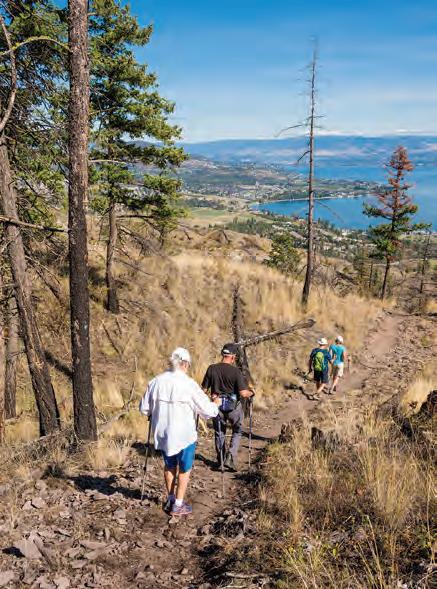
The main Big Sagebrush and Mountain Goat summit trails allow residents to connect with nature. The park adds 52-hectares to the over 2,000 in regional parks. It highlights the importance of the animals and plants that live on these lands.
That’s why protecting it was paramount, as RDCO worked closely with Westbank First Nation to ensure for the health of the land remains intact for future generations.
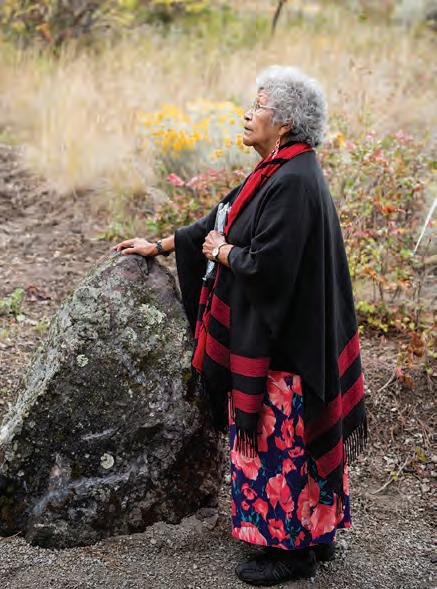
“Opening Goats Peak fulfills one of the important environmental areas identified by the Regional Board in its Strategic Priorities,” said Regional Board Chair Gail Given. “The park increases the space available for
Central Okanagan residents to enjoy and provides an exciting opportunity to work with Westbank First Nation to expand our interpretation programs and manage this culturally significant area.”
And what about the name: Goats Peak? This area is habitat for wild mountain goats, but the origin of the name “Goats Peak” likely comes from a domestic breed.
Early Okanagan settlers, the Gellatly family, raised Angora goats in this area. The goats were free to graze and fend off predators during the day. They were often spotted perched on these mountain peaks. Goats by nature love to explore, especially heights. Later in the evening, they would head down to the safety of the barn.
The goats provided mutton and wool, called mohair. Not to be confused with angora wool, that comes from rabbits. The bucks grow distinctive spiral horns, while the does grow smaller, straight horns. Angora goats are the softest, fluffiest goats in the world.
Regional Floodplain Management
Even before the record Okanagan Lake level of 2017 and high water again a year later hit our region, work was under way on the Regional Floodplain Management Plan.
The goal of the plan is to better understand the risks and what can be done to reduce potential damage from future flooding in the Central Okanagan. The first phase of the three phase project was completed in 2016 identifying and prioritizing criteria for study of flood hazard areas along with recommendations to help guide completion of the plan.
The second phase is currently underway and includes assessing the flood hazard and risk in identified high priority areas. Among these an update of floodplain mapping of Mission Creek and a dike breach analysis; flood level mapping of Okanagan Lake, Wood Lake and Kalamalka Lake as well as confirmation of major flood plans and alluvial fans and the development of floodplain inundation maps for Peachland and Trepanier Creeks.
It’s proposed the third and final phase will further develop and expand on existing flood risk mitigation strategies for the Central Okanagan.
Funding for the first two stages of the plan has been provided through the Okanagan Basin Water Board Water Conservation and Quality Improvement Grant Program, the Federal Gas Tax Fund, Provincial Infrastructure Planning Grant program, UBCM Community Emergency Preparedness Fund, National Disaster Mitigation Program and the Regional District.
WHAT GOES IN THE RECYCLING CART?
In an effort to help residents about only putting acceptable materials in their curbside recycling carts, the Recycling Ambassador Summer Student program was initiated. It’s part of the ongoing education and inspection campaign to combat recycling contamination.
Student ambassadors reached out to residents through curbside cart checks across the region as well as providing information on what can be recycled at community events. While most residents are doing a pretty good job, recycling audits show there are still a significant number of unacceptable items going into the recycling stream
Ongoing awareness is needed by all residents to help significantly reduce and eliminate these unacceptable products from our recycling loads. If we recycling contamination doesn’t improve we face financial penalties from Recycle BC and those costs could be passed on to local municipalities.
Future Plans For Most Popular Park
It’s not the largest of the 30 regional parks in the Central Okanagan, but it’s by far the most central and one of the best utilized.
Work is underway to develop a new Management Plan for the 92-hectare Mission Creek Regional Park. Stakeholders and residents at large have been involved in the process to create a new blueprint and guide for future amenities, assets and infrastructure over the next 20 years.
A new plan should be presented for Regional Board consideration in 2020. You can view more information at rdco.com/planourparks.
Enhancing Our Nature Connection
Although the Volunteers in Parks VIP program is still relatively new, it has grown to include 350 volunteers who selflessly dedicate their time and effort in support of the Regional District parks system. The program includes local residents and students who fill a variety of positions such as trail ambassadors, program assistants, trail maintenance, and data collection.
Regional District Parks Services continued to work with many ‘Friends of’ societies, NGO’s, and community groups who provided significant volunteer hours by advocating, fundraising and getting active in their chosen park.
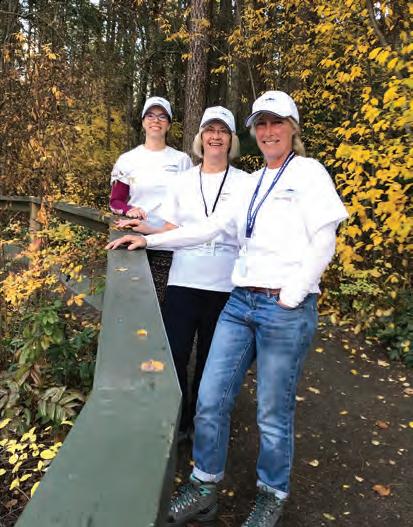
Counting Stars
It’s getting harder in most urban areas to be able to sit back and marvel at the night time wonders in the heavens above. More often than not, you have to travel some distance to enjoy a completely dark night sky.
We’re hoping to bring the dark sky experience closer to home as the Regional Board has supported nominating Johns Family Nature Conservancy Regional Park for designation as a Dark Sky Preserve.
The Royal Astronomical Society of Canada administers the program which promotes a reduction of light pollution to improve the night-time environment for animals and plants and to protect observing sites for astronomy.
The park is perfectly poised to become the province’s third dark sky preserve because of its size (405-hectares), conservancy status, location adjacent to parcels of Crown land and Provincial park and minimal lighting and infrastructure.
It would also showcase a commitment to conservation in our quickly developing region. It also offers an opportunity for meaningful partnership with our provincial, non-profit,
First Nation and public partners as well as showing Central Okanagan residents that dark skies matter.
The Central Okanagan Land Trust which has a long-term lease with the RDCO to protect and manage the more than 400-hectare Regional Park supports the Dark Sky Preserve application.
ECO-FRIENDLY CURBSIDE COLLECTION
You’ve likely seen the bright yellow trucks picking up garbage, recycling and yard waste from approximately 60,000 homes in Kelowna, West Kelowna, Lake Country, Peachland and the two electoral areas.
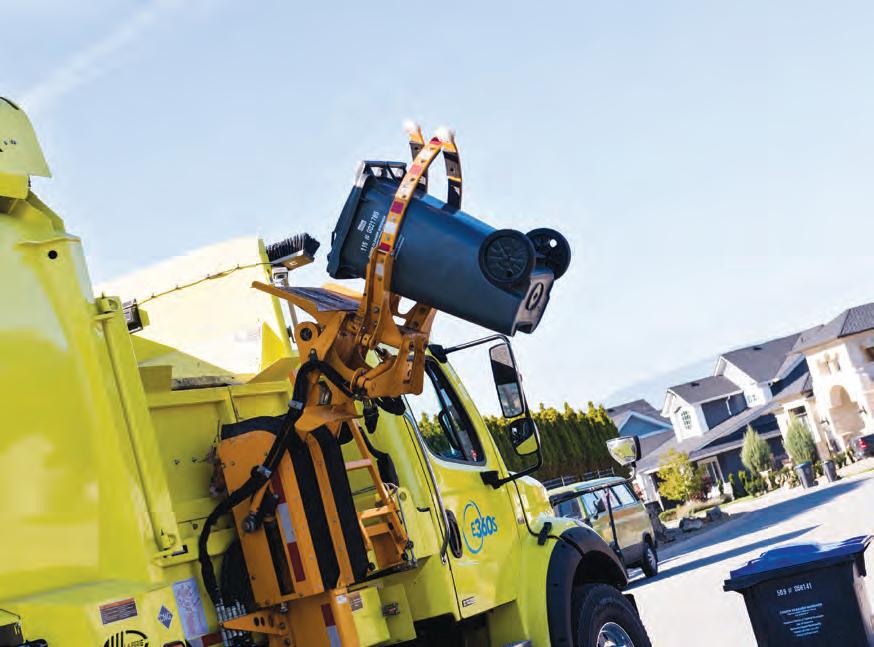
After a public tender process, E360 Solutions was awarded curbside waste collection and hauling contracts across the Central Okanagan and officially began service June 1st.
In addition to providing an extra month of yard waste pickup into December, the company operates a fleet of compressed natural gas trucks.
2020 Environment Initiatives Parks Services
• Trailhead and parking area completion and continued trail development to open Black Mountain- sntsk‘il’ntən Regional Park
• Update management plan for Kalamoir Regional Park
• Playground replacement at Bertram Creek and Traders Cove regional parks
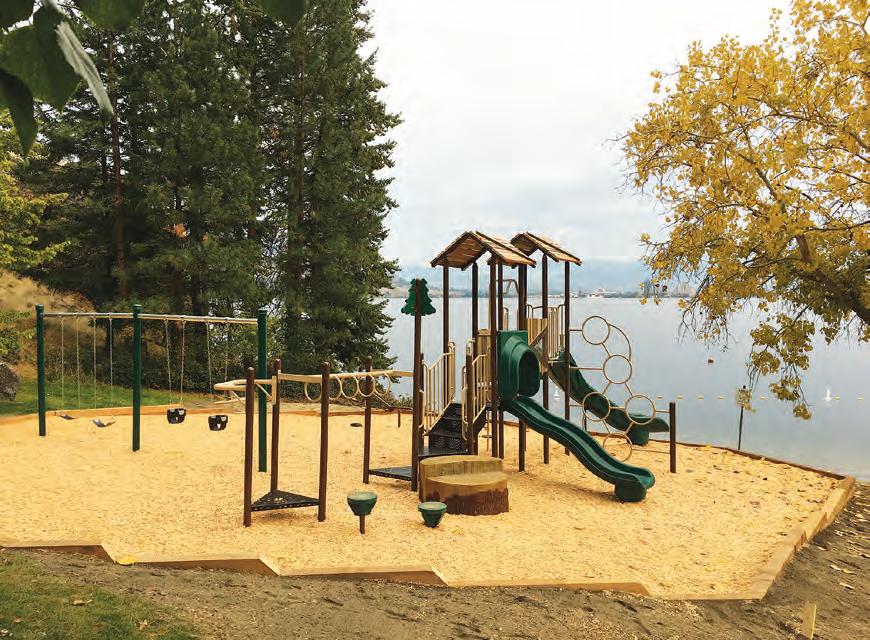
• The EECO will opens in early 2020 after renovations, with a revamped public area that will act as a source of inspiration for outdoor exploration of the RDCO regional parks system.
• Renovations and updates at Joe Rich and Ellison community halls
• Complete repairs from wildfire damage to Philpott Trail community park
Environmental Planning
• Participate with the Water Stewardship Council, Okanagan Collaborative Conservation Program (OCCP), and Species and Ecosystems at Risk Local Government Working Group.
• Take part in the implementation of the Biodiversity Conservation Strategy in conjunction with OCCP and partners to prepare an implementation strategy for the Ecosystem Connectivity Corridor from Okanagan Mountain Provincial Park to Kalamalka Lake Provincial Park, identified through the University of BC Okanagan as part of the Planning for Ecosystem Connectivity in the RDCO.
• Continue to implement the recommendations of the Foreshore Inventory and continue to conduct and update environmental inventories and mapping for use in processing applications, in GIS apps, environmental initiatives and monitoring.
• Conduct watershed improvements, stream restoration, monitoring work and outreach activities.
• Continue to collaboratively explore options for increased shoreline management of Okanagan Lake at a multijurisdictional level.
• In partnership with OCCP, South Okanagan Similkameen Conservation Program, Okanagan Nation Alliance, and partners throughout the region, continued to build on the development of an Okanagan Lake Protection Strategy.
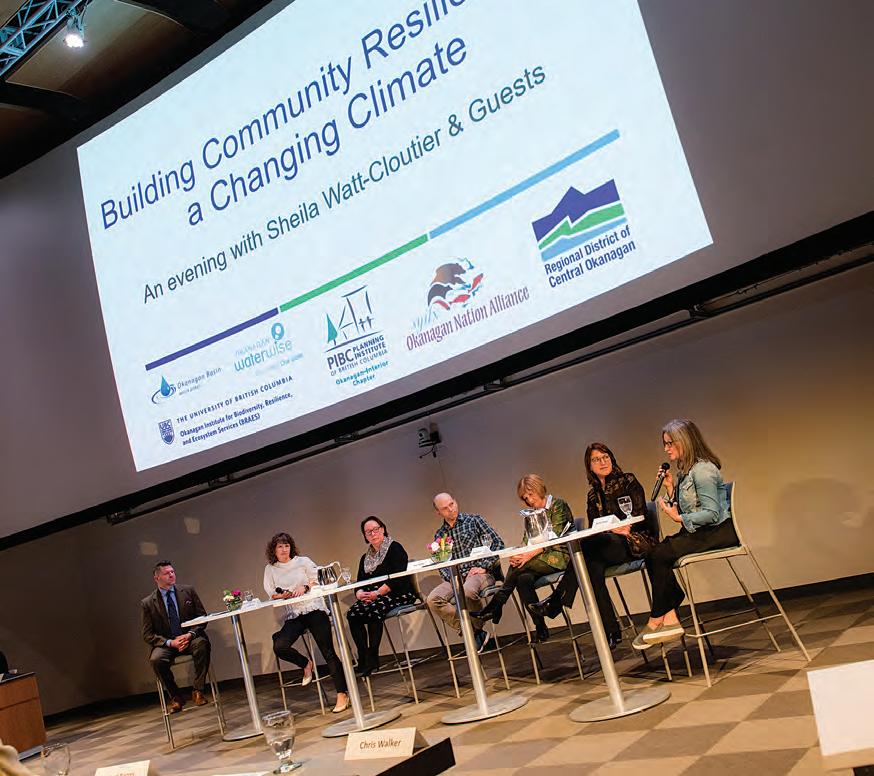
• Host a public event “Planning for Climate Resilience” regarding impacts of climate change, globally and locally –our lived experiences with natural disasters, among other topics and the need to embed climate action planning in the decisions that are made in our communities.
• Continue to implement Phase 2 of the Regional Floodplain Management Plan. The following actions from Phase 2 will be completed:
- Mission Creek Floodplain Mapping Update
- Mission Creek Dike Breach Analysis
- Okanagan Lake Flood Level Mapping
- Wood and Kalamalka Lakes Flood Level Mapping
- Major Floodplains and Alluvial Fans
- Flood-prone Sections of Watercourses
- Confirm the floodplains and alluvial fans to develop floodplain inundation maps for Peachland and Trepanier Creeks
- Trepanier and Bellevue Creek Dike Maintenance Assessments
- Dam Failure Inundation Mapping









